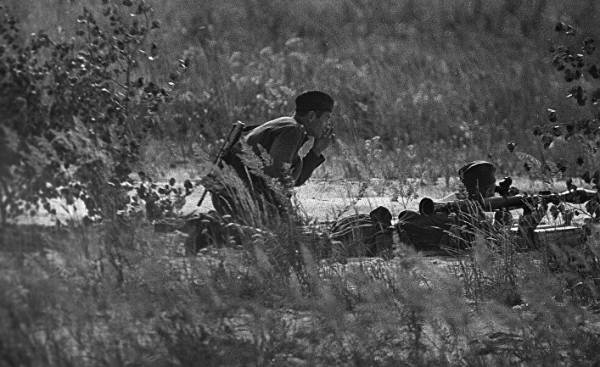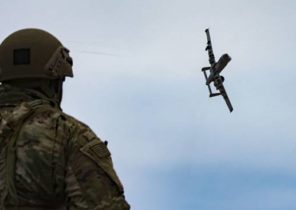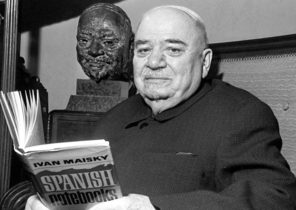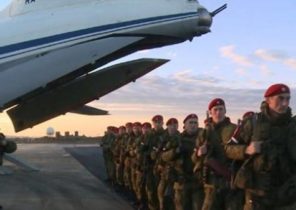
One of the most legendary weapons appeared in the Soviet Union on the basis of the experience of the Second world war, when the infantry of the red army had nothing to fight against advancing German tanks. Similar to the broom of the RPG-7 is simple and effective, and he became one of the most fearsome specimens of anti-tank weapons in the postwar period. RPG exported to many countries, and it has become a symbol of revolution and terror, because it was used in the armies, guerrilla groups and militant groups from Berlin to Phnom Penh.
The Soviet Union during the Second world war there was a serious problem: the lack of an effective portable anti-tank weapons in infantry divisions. The USSR had hundreds of infantry divisions, and the strength of the infantry amounted to one million people. But the soldier had nothing to defend themselves from the German “Tigers”.
With the creation of a cumulative anti-tank weapons, the chances of infantry in a defensive battle with the enemy tanks has increased significantly. The principle of a cumulative shell first showed the Professor the U.S. naval Academy Charles Monroe (Charles Munroe) in 1888. Cumulative excavation, usually conical in shape, covered with metal cladding, and charge with a recess located opposite to the location of the detonator with the edge toward the struck object. The cone amplifies the effects of the explosion by its concentration in a given direction. Thus, the cumulative warhead penetrates the armor to a depth of seven times its diameter.
The biggest advantage of a cumulative shell is that unlike traditional armor-piercing anti-tank ammunition he doesn’t need the high speed and density to penetrate armor. Thrown into tank cumulative grenade hand has the same efficiency as a high-speed projectile tank.
The German army was the first to use effective hand-held antitank weapon called “Panzerfaust”. It’s essentially a tube with a shaped-charge warhead, which is fired jet formed by the charge smoky gun powder. Nevertheless, the first version of this weapon pierced the armor thickness of 140 mm. In the latest version under the name “Panzerfaust 250” used reusable tube and pistol grip.
The Soviets took the “Panzerfaust 250” and created his own version of the weapon called “anti-tank hand grenade 2”, or RPG-2. RPG-2 entered service with Soviet Army in 1949. Antitank rocket grenade had a range of 150 meters and pierced the armor thickness of 180 mm. It allowed even inexperienced rookie easily hit NATO tanks of the latest models, including the American “Pershing” and the British “centurion”. The RPG-2 in larger quantities shipped abroad, and during the Vietnam war armed divisions of the North Vietnamese army and the Viet Cong.
After the RPG-2 in 1961 was improved RPG-7 grenade launcher. The range had been more, reaching 200 meters. Unlike the RPG-2 with its simple mechanical sight, the new grenade was an optical sight PGO-7 2.8-fold increase. The sight was equipped with a set of filters that improve visibility in difficult weather conditions, the scale of amendments and the rangefinder scale to determine the range to the target and take aim on moving objects. Behind the grenade was trumpet to ensure bezotchetnoy, and in front, it is equipped with extra grip, providing greater stability when firing. Cumulative grenade PG-7 could penetrate tank armor with a thickness of 260 mm, and when the improved warhead PG-7M, the penetration of the grenade increased to 300 mm.
The RPG-7 has made changes in the concept of a portable anti-tank weapons in other ways. Designed for airborne variant of RPG-7D had split the barrel, which facilitated its movement through the air. Among the new grenades were shrapnel OG-7, allows you to fight unarmored targets and enemy infantry. With the advent of the dynamic of anti shaped-charge armor protection, which uses blocks of explosives, the effectiveness of shaped charge warheads has declined, which the Council created the shot PG-7P, consisting of two cumulative combat parts. Pomegranate has become longer, and it had a second warhead. The first was intended to neutralize the “reactive armor”, and the second to defeat most armored vehicles.
In the Soviet Army and Warsaw Pact RPG-7 was the standard weapons of the Department. This means that the Department of 6-9 Marines was one rocket launcher and one his assistant. Thus, in the infantry company of the armies of the Warsaw Pact had up to nine RPG, which provided her defense at close range. And there was a ATGM.
Due to the fact that the Soviet Union generously helped the guerrilla and revolutionary movements around the world, RPG has also been used in Central America, in Southeast Asia, in African conflicts in the middle East. This grenade launcher was even used fighters from the German “Fractions of red Army” and of the Irish Republican army in the fight against the British military in Northern Ireland. In 1993, the RPG-7 was shot down a Black Hawk helicopter from the composition of the 160th aviation regiment special operations, which marked the beginning of the infamous Battle in Mogadishu. One of the most famous shooters of RPG was the Afghan Mujahideen who used this weapon in large numbers against the Soviet occupation forces from 1980 to 1988.
Even now RPGs, since the invention which has been for 60 years, continues to be used worldwide. These grenades constantly threatened during the Iraq war. First, they were used by the soldiers of the Iraqi army, and then anti-government and anti-coalition forces. After the Mujahideen RPGs have adopted and began to be widely used by the Taliban. As the author notes Gordon Rottman (Gordon Rottman), seven of the eight American military helicopters downed in Afghanistan from 2001 to 2009, was destroyed by the RPG. RPG is actively used by Hamas and Hizbollah, it is possible to find all those involved in the civil war in Syria, and the weapons used by the militants of the “Islamic state” (banned in Russia organization — approx. TRANS.)
In the 1970-ies to replace the RPG-7 came an improved model of the RPG-16. The latest example of the RPG-29 was adopted in the last days of the Soviet Union in 1991, and today it is actively used in military units of the Russian army. The standard anti-tank RPG-29 is a tandem type with shaped-charge warhead. This shot thermobaric grenade launcher used against bunkers and fortifications. RPG-29 was used successfully three times against modern Western tanks, and all three times to Iraq, twice against tanks “Abrams” and once against “Challenger-2”.
The Soviet experience of the Second world war showed that the effective anti-tank weapons are needed at all levels down to infantry sections. Many examples of Soviet, and later Russian weapons a generation behind Western models, but this cannot be said about manual anti-tank grenade launchers. Tensions between the United States and NATO on the one hand, and Russia on the other increases, and in these conditions, military planners must keep in mind that even the Russian light infantry is very dangerous to armored troops.
Kyle Mizokami is a specialist in the field of defense and national security. Lives and works in San Francisco, and his articles are published in such publications as the Diplomat, Foreign Policy, War is Boring and the Daily Beast. In 2009, he became one of the founders of the blog Japan Security Watch.







